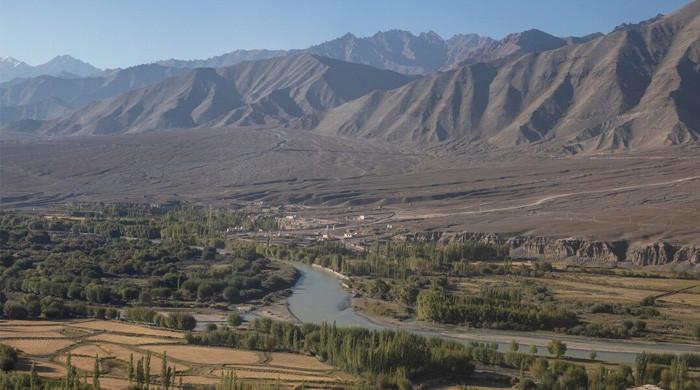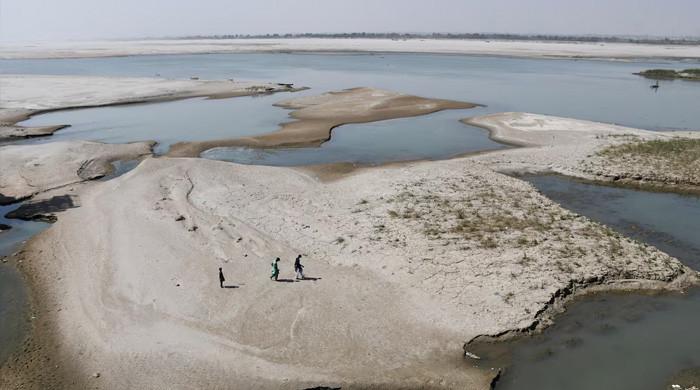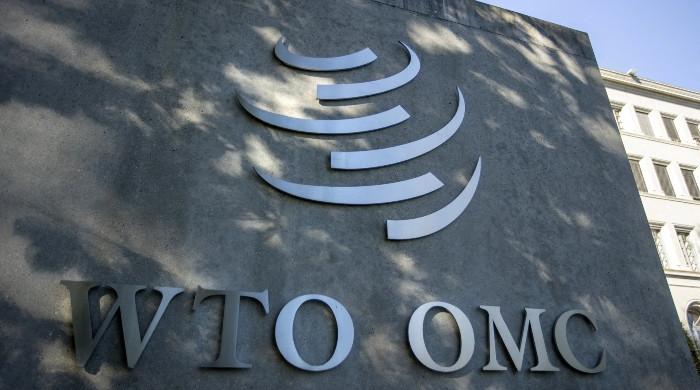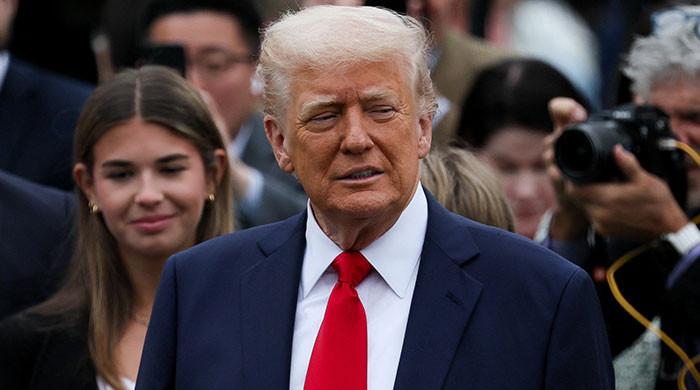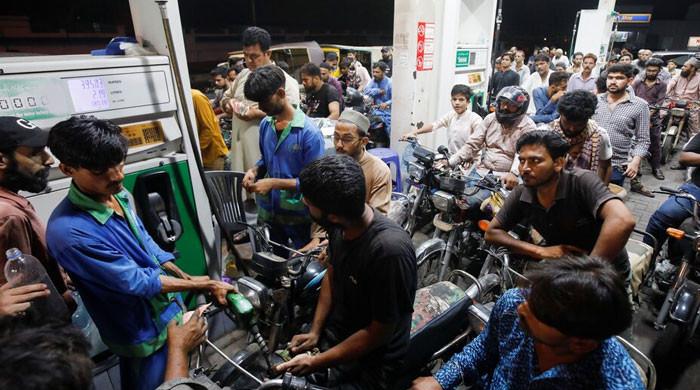The Age of the Qazi
CJP Qazi Faez Isa has no room to nurse the wounds of charges framed and pursued against his family
September 19, 2023
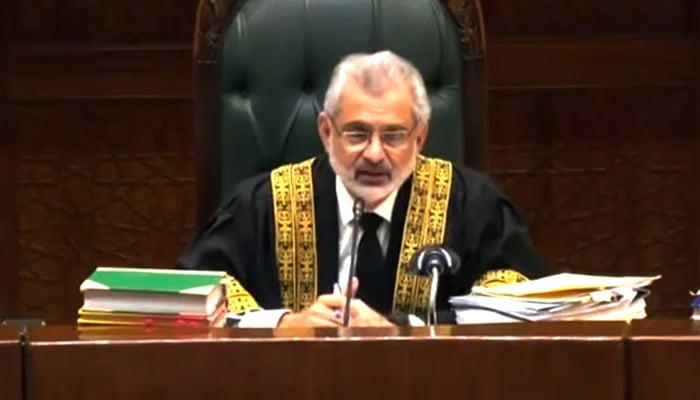
The ascension of Justice Qazi Faez Isa to the office of chief justice of the Supreme Court of Pakistan is no ordinary moment in Pakistani judicial and institutional history.
As recently as within the last 12 months, we didn’t know whether the new chief justice would ever, in fact, become chief justice. Frivolous cases were pursued to tar and feather the judge for years prior to his eventual ascension to the role. Now that he has taken the sacred oath, everything changes. Two changes are especially important.
First, the new chief justice must elevate himself above himself — as a judge. This is a tall order. Why? Because Qazi Faez Isa — the man — was aggrieved by the manner in which charges were framed and pursued against his family, but Chief Justice Isa — the CJP — has no room to nurse those wounds.
The CJP is the eldest among the elder wisemen of the republic. There is no room for vengeance, for keeping score or even for having a robust hard drive with a deep memory. The challenges facing the republic, its constitution and the overarching relationship between the people and the concept of rule of law are too many, too deep, too wide and too serious.
Now that he has taken oath, he must essentially operate as though there had never been any effort to undermine him or his family. If this is a tall order, the CJP is a high chair — its stature cannot be dictated by the last man (or last few men) to occupy it. Its stature must be dictated by the highest aspirations of Pakistan’s founders and its guardians — our lawyers, constitutionalists, and jurists.
To do this, CJP Isa will need to establish and maintain peace within the Supreme Court of Pakistan. Given the acerbic nature of genuine disagreements within the court, this will be a huge undertaking.
Second, the chief justice must elevate the judiciary above itself – as an institution. This will sound whimsical, but it is not. It is grounded in some foundational truths about today’s institutional landscape. First, the current composition, and means of elevation to the position of CJP, and the protections afforded to the judiciary writ large, are products of the same ‘moment’ in Pakistani institutional history as the 18th Amendment, the 7th NFC Award, a robust and raucous free press, and the democratic credentials of mainstream political parties led by the PML-N and PPP.
This ‘moment’ — let’s call it the post-March 2007 Pakistani governance consensus — began in March 2007 and continued through 2011, claiming not only unprecedented democratic and federal consolidation but also the scalp of Pakistan’s last explicit military dictator.
What is left of this special moment? Mostly smithereens. The true wreckage of the PDM government’s fifteen months in power isn’t the economy, or even the state of civil rights (both crises have precedent, and neither was invented by the constituent parties of the PDM).
The real wreckage of the PDM government’s fifteen months in power is the PDM itself — its standing on the issues that supposedly distinguished it from the PTI. The most profound long-term damage done by the PDM is to the idea and notion of parliament as the sacred ground it should be.
The institutional wreckage that CJP Isa must consider is not just composed of the formal political landscape, but also of the reputation and standing of the military in the mainstream.
The confrontation between Imran Khan and the establishment that nursed him from the political wilderness in 2011 to the ‘Azadi dharna’ in 2014, to the office of prime minister in 2018 and back onto the streets in 2022, has had profound implications for the way the security establishment is perceived.
Through all this institutional wreckage — unbelievably — the judiciary has survived. Barely (but unmistakably) the judiciary is the only macro institutional framework where there has been procedural consistency; every single new chief justice (nine in total) has taken the oath of office as planned by the rules of the game set by the post March 2007 Pakistani governance consensus. Ironic that one of the supposedly least functional of all of Pakistan’s systems — the system of delivering justice — is the only one that has managed to maintain consistency and predictability.
Miraculously, the Pakistani superior judiciary has managed to evade and avoid the kind of crises that stir prior to changes of guard in Rawalpindi or at the PM Office. Is this a mere accident or does it portend something more profound, and dare-one-say, something positive?
To answer this, we will need to examine how the next thirteen months and one week go. CJP Isa’s Supreme Court is one reeling from fractures that exploded into public feuds during former CJP Umar Ata Bandial’s tenure. Little good can come of an 8-7 divide at the Supreme Court.
CJP Isa must preside over a healing of fractures in his court, if he is to have any chance of healing the wounds inflicted upon Pakistan’s institutional landscape over the last fourteen, twelve, nine, six, five, or two years (take your cherry pick from among those vastly different, and partisan, chronological start or end points).
The fact that the judiciary has survived all the factors that have undermined Pakistan’s formal political system as well as the standing of the military in the public eye does not mean that the justice system is in good health. In fact, it may mean the exact opposite. Perhaps the most urgent thing that should keep CJP Isa and his fellow judges on the Supreme Court up at night is the degree to which the judiciary – as a national institution – actually matters at all.
One interpretation of the resilience of the post March 2007 Pakistani judiciary is that chief justices can come and go on schedule because other than peripheral differences of personality, the judicial system at large is so eminently ‘manageable’ that no one ever needs to break anything to get their way. This of course being theoretically quite unlike the elected (and even allegedly selected) men that occupy the office of the PM, who tend not to go without a fight.
So does the judiciary matter? Ultimately, this is the test that now falls to Chief Justice Isa.
He will need to forge consensus or at least an uncontroversial majority on some incredibly important questions in the next few months, beginning with a date for a general election, the dispensation of justice to many PTI supporters that have been incarcerated unfairly, a credible treatment of the cases against Imran Khan, an equally credible treatment of the new/old wave of NAB cases against traditional party leaders, and perhaps most importantly, a firm but unspectacular (and non-combustible) continuity of his commitment to the rights of Pakistani citizens and the accountability of public servants — including those serving our uniformed institutions.
In attempting all this, he (and many others) must not forget that whilst there is a generation of Pakistanis that rightly celebrate the post-March 2007 Pakistani governance consensus and the resulting independence of the judiciary, the vast majority of Pakistanis are too young, and too fed up with the daily indignities of unrelenting micro injustices to care.
For many such Pakistanis the heroism and grandness of the movement for the restoration of the judiciary 2007-2009 doesn’t hold a candle to the electricity and fervour that they felt throughout 2022 and early 2023 as they rallied to Imran Khan’s corner.
Among Pakistan’s five most important ‘elders’ today (COAS Munir, Nawaz Sharif, Imran Khan, Asif Ali Zardari and Chief Justice Isa) perhaps none can grasp the complexity and fragility of this particular Pakistani moment as deftly and delicately as CJP Isa can.
How he delivers on the promise of his tenure will not just define his legacy or the fate of the judiciary as a grand national institution. It will also shape the nature of Pakistani stability and recovery (or lack thereof) in the near to mid-term. Most everyone with any kind of stake in Pakistan at all should be praying for CJP Isa and his SCP colleagues’ success. In their success lies Pakistan’s emergence from this period of intense crisis.
The writer is an analyst and commentator.
Originally published in The News





